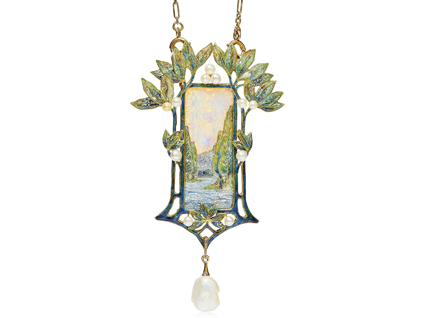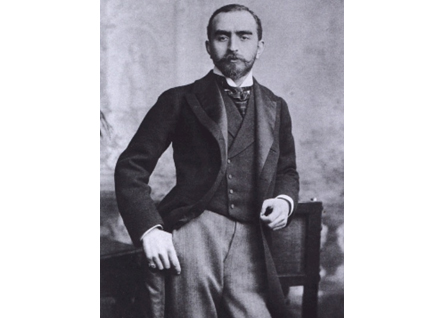A Stunning Art Deco Bracelet by Georges Fouquet
Article from Berganza

Georges Fouquet

The renowned French jewellery firm of Fouquet was founded in 1862 by Alphonse Fouquet (1828-1911). Alphonse was particularly renowned for his jewels in the Renaissance revival taste, many of which incorporated engraved gems, cameos and enamelled miniature paintings of the highest calibre. His jewels were exhibited at various International Exhibitions, including those of 1878 in Paris and 1883 in Amsterdam.

Georges Fouquet
The successive generations carried on this excellence in quality and design. Alphonse's son Georges (1862-1957) took over management of the firm in 1895, and maintained its high standards and cutting-edge designs. He is particularly known for his Art Nouveau works which are considered to be on par with Lalique, and for which the House of Fouquet won praise at the 1900 Paris Exhibition with their jewels designed by Czech painter Alphonse Mucha. One such collaboration was made for the famed turn-of-the-century actress Sarah Bernhardt.
The firm next took up with great mastery the Art Deco style, with the help of Georges' son Jean, who contributed to their display at the famed 1925 Exposition, from which the movement acquired its name. Georges himself was the President of the Bijouterie-Joaillerie class at the Exhibition. Shortly thereafter he retired from the firm, ceding full control to Jean.
The present bracelet was most likely created under Georges' tenure of management, based on its early Art Deco style, placing its manufacture date between 1920 and 1925. The delicacy of weight, monochrome palette, and use of fine millegraining act together to suggest this timeframe. The graceful design harks back to Georges' Art Nouveau jewels, yet the austerity of line and colour render the design timeless.
More from Antique Art Deco Jewellery









Connect with us
Sign up for regular emails on our new acquisitions, news and features: